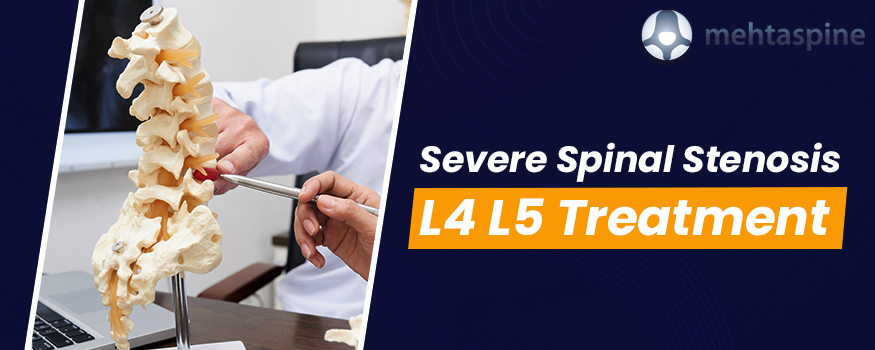Severe Spinal Stenosis L4 L5 Treatment
Spinal stenosis, a narrowing of the gaps in the spine, can compress your spinal cord and the nerve roots which exit each vertebra. According to orthopedic spine specialists, aging-related alterations to your spine are a frequent cause of spinal stenosis. The spinal cord or the nerves may get irritated, compressed, or pinched due to restricted space, resulting in back discomfort and sciatica. Spinal stenosis typically worsens over time gradually.
This implies that even if alterations may be seen on X-rays or other imaging tests if they are done for another purpose, you might not have signs right away. Depending on where and how serious the spinal stenosis is, you can feel pain, numbness, tingling, or fragility in your neck, back, limbs, fingers, or feet.
Causes and Symptoms
Many factors can lead to spinal stenosis. They all alter the spine’s structure, which results in a narrowing of the area around your spinal cord and the nerve roots that leave the spine. There are several reasons for spinal stenosis, these include:
- Osteoporosis and arthritis spurs
- Swollen discs
- Enlarged ligaments
- Fractures and wounds to the spine
- Spinal tumors
Usually, the narrowing of the spinal canal occurs gradually and worsens over time. Although spinal stenosis can develop anywhere along the spinal column, it often impacts the neck and lower back. The spine surgeons in UK claim that each person’s symptoms are unique and can change over time. Spinal stenosis in the lower back (lumbar) and neck (cervical) can cause the following symptoms:
- Sore neck
- Arm, hand, foot, leg, or another body part numb or tingling
- Heavy sensation in the legs that could cause one or both legs to cramp
- Difficulties with balancing
- Sluggishness or awkwardness
- An ache that subsides by bending slightly forward, leaning
- Lower back pain
Treatment of Spinal Stenosis at L4 and L5
Laminectomy is the procedure used most frequently to treat spinal stenosis in the L4-L5 area. During this procedure, the lamina is either entirely or in part removed to widen the spinal canal and relieve nerve compression. The vertebral arch is made up of a little piece of bone called the lamina. It covers the back of the spinal canal.By removing all or part of this bony spinal component, your spinal surgery can effectively address the signs and indicators of spinal stenosis. However, after a laminectomy, spinal instability is a possibility. Many spinal stenosis surgeons have combined the procedure with spinal fusion to reduce this risk.The following conventional therapies are frequently used to treat spinal stenosis at L4 and L5.
- Exercises for joint stabilization, joint mobilization, heat or ice therapy, massage, and physical therapy may also be used.
- Changing one’s habits and activities, such as giving up smoking and beginning a low-impact exercise program,
- Chiropractic treatment, which employs physical adjustments to improve spinal alignment,
- Acupuncture is a treatment that might encourage the body’s own healing mechanisms.
- These are some conditions when using a spinal cord stimulator can help.
- One of the best spine specialists in UK who has successfully treated people with spinal issues is Jwalant S. Mehta. For comprehensive care for any spine-related issues, consult Mr. Mehta.


